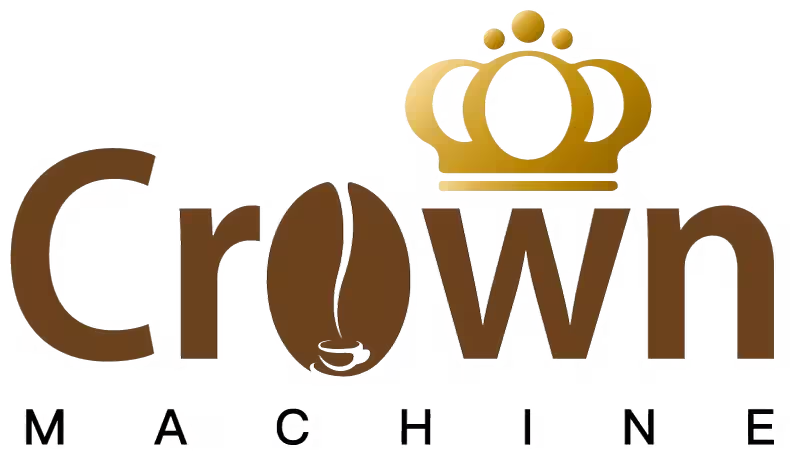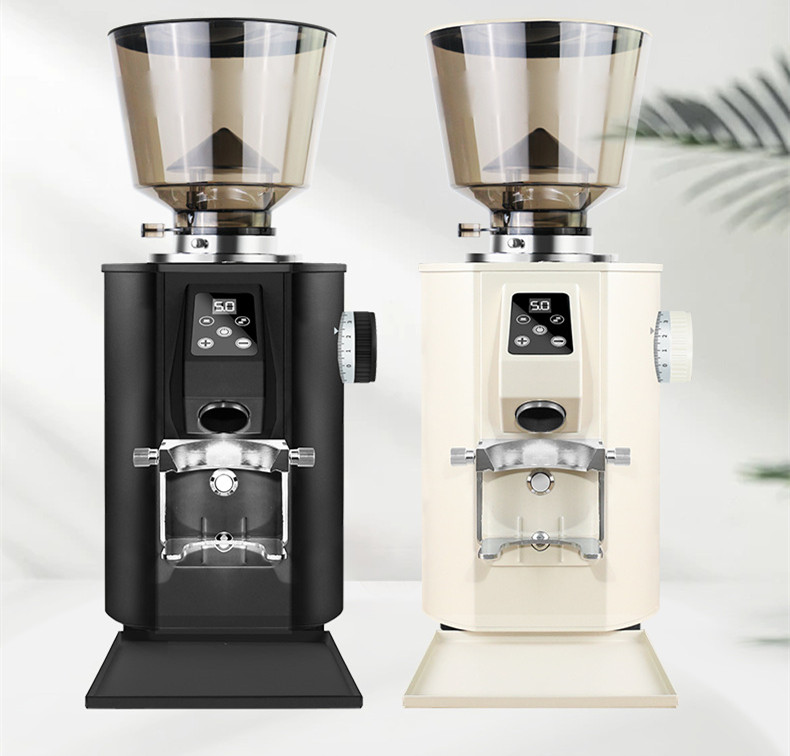The professional grinding machine in a coffee roasting shop is the core guarantee for the quality of coffee output, and its role runs through multiple dimensions such as flavor control, efficiency improvement and operational optimization. The following is a detailed analysis of its core values from a professional perspective:
First, the core tool for flavor control
Precise grinding degree adjustment
It is suitable for different brewing methods: Italian concentration (extremely fine powder), hand brewing (medium and fine powder), French press pot (coarse powder), etc. Different particle sizes need to be matched. Professional grinding machines ensure extraction efficiency through micron-level adjustment.
Case: Italian espresso requires high-pressure extraction at 9-10bar. If the grinding is too coarse, it will lead to a too fast flow rate and a bland flavor. Excessive pressure is prone to clogging the filter screen and causing a burnt and bitter taste.
Reduce flavor loss
Low-temperature grinding technology: High-speed motors tend to heat up, causing the coffee grounds to oxidize. Professional models maintain the grinding temperature below 40℃ through low speeds (such as 450-600RPM) or active cooling systems, thereby retaining more aroma substances.
Comparative experiment: For the same type of coffee beans, the acidity is brighter and the sweetness lasts longer when ground at low temperatures, while high-temperature grinding may lose more than 30% of the volatile aromatic substances.
Particle uniformity guarantee
Conical cutter head vs. flat cutter head: Conical cutter heads (such as Mazzer Robur) reduce the fine powder rate (<5%) through vertical cutting, while flat cutter heads (such as Mahlkonig EK43) are suitable for high-flow scenarios, but the fine powder rate may reach 8%-10%.
Impact: Excessive fine powder can lead to uneven extraction, resulting in a sharp or bitter aftertaste. Uniform particles can enhance the consistency of extraction and make the flavor cleaner.
Second, the support of efficiency and production capacity
Continuous powder output capacity
Large-capacity bean silo: The capacity of the bean silo for professional models is usually ≥1kg, reducing the frequency of adding beans.
High-power motors: For example, Compak K10 Fresh is equipped with a 1.5HP motor. It only takes 3 to 4 seconds to grind 20g of beans at a time, which is suitable for continuous cup pouring during peak hours.
Stability and durability
Metal knife head: Made of hardened steel or titanium alloy, with a lifespan of 5,000 to 8,000 pounds of coffee beans (only 500 to 1,000 pounds for household models).
Anti-jamming design: For instance, the intelligent sensing system of Ditting 804 can automatically reverse the cutter head to prevent it from being jammed by stones or hard objects.
Third, operation optimization and cost control
Reduce waste of raw materials
Quantitative grinding function: Supports precise powder output for single cups (15-22g) or multiple cups (50-100g), avoiding manual weighing errors.
Residual coffee bean rate control: The residual coffee bean rate of professional models is less than 0.5g, while that of ordinary models may be 2-3g. Calculated based on a daily sales volume of 200 cups, approximately 1kg of coffee beans can be saved each month.
Reduce maintenance costs
Modular design: Components such as the cutter head and bean bin can be quickly disassembled, reducing the cleaning time to within 5 minutes.
Long-term maintenance: For high-end models (such as Mythos One), the cutter head is replaced every 1-2 years, with a maintenance cost of approximately ¥800- 1,200 yuan per time, which is much lower than the hidden cost of frequent maintenance.
Summary
The professional grinder in a coffee roasting shop is not only a tool but also a balance point between flavor and efficiency. Its core value lies in:
Flavor aspect: Through precise grinding and low-temperature control, the aroma and sweetness of coffee beans are maximized.
At the operational level: Reduce waste, increase the speed of serving cups, and directly lower the cost per cup.
Brand level: Professional equipment demonstrates the pursuit of quality and enhances customer trust.
It is recommended to select the model based on daily sales volume, brewing method and budget. In the initial stage, second-hand professional models (such as Mahlkonig K30) can be considered, with a cost of only 40%-50% of the new model, but the wear condition of the cutter head needs to be confirmed.


